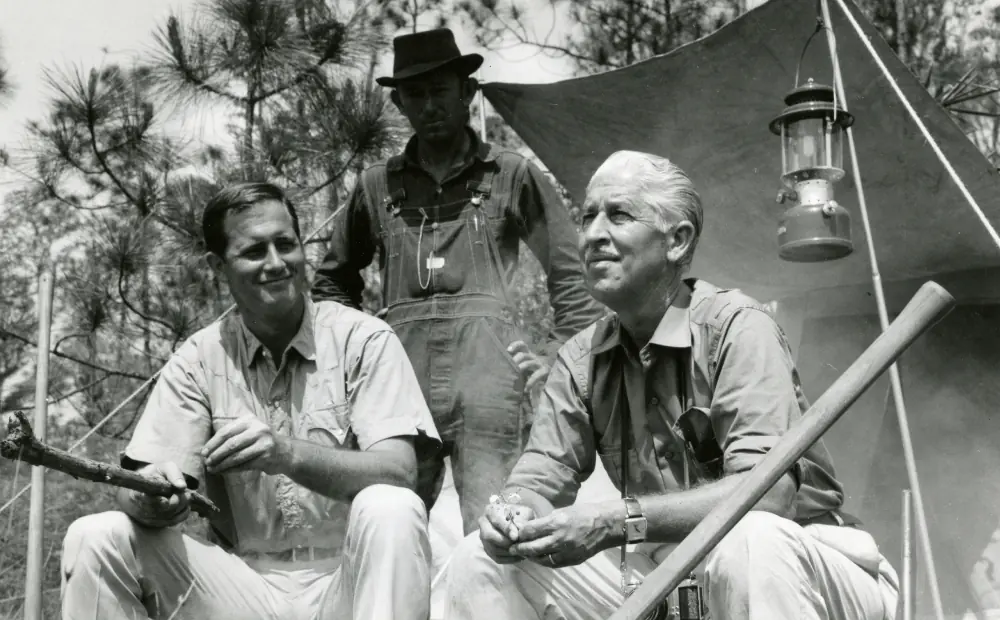0:05
A vast sea of grass once stretched across much of North America, but less than 5% of the original tall grass prairie remains lost to agriculture, urban sprawl, invasive species and climate change.
0:22
American bison, also called Buffalo by some indigenous communities, are the quintessential species of the P=prairie.
0:30
Only 200 years ago, as many as 60 million roamed the Great Plains.
0:35
Not only has most of their habitat disappeared, they were driven to extinction by hunters in the late 1800s, with only about 300 individuals left by the late 19th century.
0:49
But for decades, conservation efforts have slowly been underway to bring bison back to the prairies.
0:55
Last precious fragments.
0:58
The Wind River Indian Reservation, shared by the Eastern Shoshone in the Northern Arapaho, is home to one such project, an inspiring tribal Buffalo initiative.
1:10
I traveled to central Wyoming, where Executive Director Jason Baldez introduced me to one of the newest members of the herd of 200 calf.
1:18
Oh, look at that table calf.
1:21
This is the cutest place that I have ever seen.
1:24
There he is.
1:26
It's unusual for a calf to be orphaned, but this one was recently spotted without a mother.
1:33
So for just a little while, Jason has to be his surrogate mom.
1:38
So does he know every day that you're here to see him?
1:41
He's here every six to eight hours.
1:43
He.
1:43
He is ready for his meal.
1:45
Hey, bud, I'm here.
1:47
Bull calf.
1:49
Bull calf.
1:50
So he's under 30 days old.
1:53
He's about 27 days.
1:54
And look at the size of him already.
1:57
Now, if he had been born out here and someone hadn't spotted him, you think he would have survived?
2:02
No.
2:03
So this is his best second chance at survival.
2:05
When the herd comes by, he'll go hang out with him.
2:08
And then when he's hungry, he comes back.
2:10
So he's learning.
2:12
As he gets older, he'll become less dependent on the bottle and he'll spend more time with a herd.
2:16
The goal is to make sure he knows he's a Buffalo.
2:19
And this guy, he'll never have a rope on his knee, never be in a rodeo or B Rd.
2:23
From a tribal perspective, how meaningful is this?
2:27
Well, it is.
2:28
It is extremely meaningful because we've lived alongside this, this Buffalo, this species for thousands of years.
2:37
American bison are the largest land mammals in North America.
2:42
These herbivores are social animals living in herds that can number in the hundreds.
2:48
Calves are called red dogs for the reddish orange coats.
2:52
You often hear the question bison or Buffalo.
2:55
Generally in English, Buffalo is the more correct term for for tribes.
3:00
We now have over 200 Buffalo collectively between the two tribes.
3:05
Most Buffalo and United States are under commercial meat production.
3:09
They're ranched.
3:10
So what we want to do and see here is grow a population that will become protected under tribal law as wildlife and ensuring that these Buffalo will have the habitat to be here in perpetuity and a place in the Prairie that used to have 59 million bison migrating through it.
3:25
Millions of Buffalo were in this area.
3:29
And can you tell me a little bit about all the good that this herd of Buffalo will do for the Prairie itself?
3:34
Buffalo are ecosystem engineers.
3:36
As a keystone species, they're very important in plant and animal biodiversity.
3:41
They're wallowing behavior that creates micro depressions in the landscapes, very important for water accumulation and seed dispersal.
3:49
Their hooves naturally aerate the soil when they walk.
3:52
They're grazing behavior so allows plant biodiversity.
3:55
They'll graze in patches and leave other areas alone.
3:58
They heal the land and in turn they heal us as a Shoshone and around the whole people.
4:05
A cornerstone of the initiative is to expand the protected habitat for the growing herd.
4:11
So far, Wind River has pieced together about 200 acres.
4:15
Removing fences is part of your master plan, right?
4:18
That's true.
4:19
In order to open up habitat for Buffalo, we've got to acquire land.
4:24
And that means taking down fences so that the Buffalo have contiguous habitat to use.
4:28
So this is a new property that we were able to acquire.
4:33
And so this is some fence that is no longer needed.
4:35
Nothing I'd rather do than take down a fence.
4:38
That's correct.
4:39
Take some fences down.
4:40
So we're going to start with this one here.
4:43
Jason and I began opening up a few more acres for this red dog to grow up on.
4:49
There are now roughly 31,000 wild bison in North America, and this initiative is just one of hundreds of projects across the United States dedicated to rewilding the lost Prairie.












